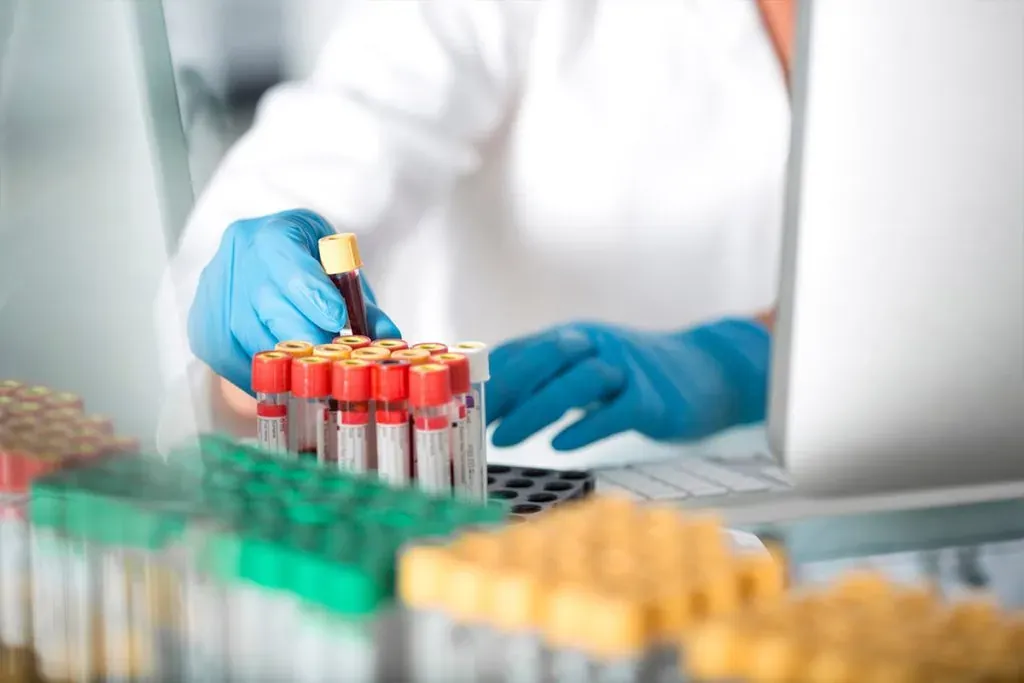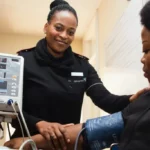Normally, when a blood vessel is injured, your body acts quickly to stop bleeding. Blood components like platelets (specialized cells) and clotting factors (proteins) work together to form a clot at the injury site. This essential process, called coagulation, prevents excessive blood loss. Once the injury heals, the clot usually dissolves, allowing blood to flow freely again.
However, sometimes this intricate process goes wrong. Disruptions can lead to blood clotting disorders, conditions where blood either doesn’t clot properly or clots too much. Understanding these disorders will help manage the health risks.
What Are Blood Clotting Disorders?
Blood clotting disorders are abnormalities affecting the body’s ability to regulate clot formation and dissolution. They generally fall into two main categories:
- Bleeding Disorders: The blood doesn’t clot effectively, leading to excessive or prolonged bleeding even from minor injuries.
- Excessive Clotting (Thrombotic) Disorders: Blood clots form too easily or don’t dissolve properly. These clots can block blood vessels (thrombosis), leading to serious complications like deep vein thrombosis (DVT), pulmonary embolism (PE), heart attack, or stroke.
Types and Causes of Blood Clotting Disorders
These conditions can be inherited (genetic) or acquired later in life. They include;
1. Hereditary Disorders
- Hemophilia: The most well-known genetic bleeding disorder, caused by a deficiency in specific clotting factors (Factor VIII or IX). People with hemophilia bleed longer than normal and bruise easily.
- Von Willebrand Disease: Another common inherited bleeding disorder affecting platelet function and a specific clotting factor.
- Inherited Thrombophilia: Genetic mutations (like Factor V Leiden) that increase the tendency to form abnormal blood clots (thrombosis).
2. Acquired Disorders
These develop due to other conditions or factors:
- Liver Disease: The liver produces most clotting factors. Severe liver problems can impair clotting factor production, leading to bleeding tendencies.
- Vitamin K Deficiency: Vitamin K is essential for synthesizing several clotting factors. Deficiency can cause bleeding problems.
- Certain Medications: Blood thinners (anticoagulants) intentionally reduce clotting; other drugs can sometimes affect clotting unintentionally.
- Other Medical Conditions: Cancers, autoimmune diseases, and severe infections can sometimes trigger clotting disorders.
Recognizing Potential Signs of Blood Disorders
Symptoms vary widely depending on whether you have a bleeding or clotting disorder. Some common signs include;
- Signs of Bleeding Disorders: Frequent large bruises, prolonged bleeding after cuts or surgery, frequent nosebleeds, heavy menstrual bleeding, blood in urine or stool.
- Signs of Excessive Clotting (Thrombosis): Swelling, pain, redness, warmth in a leg (possible DVT); sudden shortness of breath, chest pain, coughing up blood (possible PE); symptoms of heart attack or stroke. These require immediate medical attention.
(Note: This is not exhaustive. Symptoms can overlap with other conditions. Consult a doctor if concerned.)
Diagnosing Blood Clotting Disorders
If a blood clotting disorder is suspected, specific tests are needed. Diagnosis often involves a combination of medical history, family history, physical examination, and laboratory tests. Common diagnostic tests include:
- Complete Blood Count (CBC): Checks platelet count.
- Prothrombin Time (PT): Measures how long it takes blood to clot, assessing certain clotting factors.
- Partial Thromboplastin Time (PTT): Measures clotting time involving different factors than PT.
- Specific Clotting Factor Tests: Measures the level or function of individual factors if hemophilia or other specific deficiencies are suspected.
- Tests for Thrombophilia: Specific genetic tests if excessive clotting is suspected.
These individual tests are often grouped into a Coagulation Test to provide a comprehensive overview of your blood’s clotting ability. This blood clot test panel helps doctors pinpoint the nature of potential clotting disorders.
Conclusion
Blood clotting disorders, whether they cause too much bleeding or excessive clotting, can have serious health implications. Understanding the potential causes and recognizing signs is important. If you have concerns about easy bruising, excessive bleeding, unexplained clots, or a family history of blood clotting disorders, speak to your doctor.
Diagnostic testing, often through a Clotting Profile Test, is key to identifying any underlying issues and guiding appropriate management or treatment.
Concerned about your clotting health? Healthtracka offers a comprehensive Clotting Profile Test conveniently performed with at-home sample collection. Book your test today.




